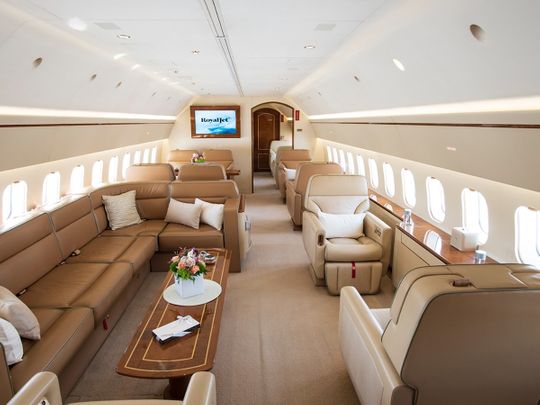
Dubai: While the global aviation industry continues to battle capacity issues, business jets have a slightly better outlook and seeing steady demand from individuals and corporate fliers. This interest is likely to feature prominently at the MEBAA Show taking place in Dubai next week.
As many as 8,500 visitors are expected to attend the show being organised at the Dubai Airshow site in Dubai World Central from December 6 to 8. Participants from 95 countries have already registered interest – the largest ever pre-event registration, says Ali Ahmed Alnaqbi, Executive Chairman of Middle East & North Africa Business Aviation Association.
“The tremendous rise of business aviation is a trend we are not only witnessing in the Middle East, but in key international markets, and we are committed to supporting this growth and taking the industry to new heights.”
There is a 10 per cent increase in exhibitors, and 42 of the exhibitors will be coming to the show for the first time
Sustainability at the forefront
Sustainability, adoption of new technologies, and affordable Sustainable Aviation Fuel (SAF) will be the key talking points even as buyers and sellers sign millions of dollars in business deals. “Many companies involved in SAF development will be attending,” said Tim Hawes, Managing Director of Tarsus Group, the organizer. “They will have talks with local fuel companies to see the best way from the business aviation perspective to increase the use of SAF.
“We are also discussing with UAE’s GCAA (General Civil Aviation Authority) to start discussions with local fuel producers in respective countries in order to see the best way to increase the use of SAF,” added Alnaqbi.
The aviation industry on the whole contributes less than 4 per cent to global carbon dioxide emissions, and business jets make up a miniscule proportion of that. Even then, the industry has been at the forefront of developing new technologies to reduce emissions.
“The industry has been in talks with aircraft and engine manufacturers to speed up electric and hydrogen technologies, and the government to roll out legislation to the effect,” Alnaqbi added
Future of business aviation
“Business flying is no longer as expensive as it used to be,” added Alnaqbi. “There has been a tremendous surge in demand during the pandemic, and then Expo 2020 Dubai and now the World Cup in Qatar. There are many first-time flyers, who have converted from business class and first class commercial flying,”
While most of the global aviation industry had come to a standstill during the pandemic, business jets kept operating to some extent. “Whether it was repatriation flights or medical emergency operations, we kept things going.”
Recession impact
While commercial operators are facing a shortage of new aircraft delivery and also timely servicing of planes because of manpower shortages, business jets in a slightly better space. Reason? There is plenty of inventory in the secondhand market.
“Delivery shortages have affected the market in many ways, but that’s for new planes,” said Alnaqbi. “The secondhand aircraft market has peaked significantly. So the net effect is not so much. “That’s why we are here. Despite all market situations, we need to bring manufacturers and buyers together. This will pave the road for future growth.











